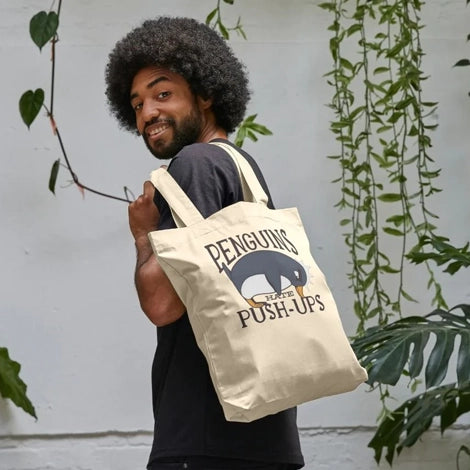Conservationists are often accused of prioritizing 'cute and cuddly' animals over les glamorous species. For their part, some conservationists argue that harnessing the potential of 'flagship species' such as gorillas, tigers and pandas does far more good than harm. Tackling this issue for The Earth Times Asks series of debates are Helen Buckland and Nathan Yaussy.
Helen Buckland is the UK Director of the Sumatran Orangutan Society. SOS works for a brighter future for orangutans and their forests. and campaigns to break the link between oil palm development and deforestation. You can join the SOS Facebook group (www.facebook.com/orangutanssos), follow SOS on Twitter (@orangutansSOS), and visit the website to find out more about their projects at: www.orangutans-sos.org.
Nathan Yaussy is a zoologist, working as an Adjunct Professor at Northern Michigan University. In his free time, he writes Endangered Ugly Things, which can be found at: endangered-ugly.blogspot.com.
Why are certain species prioritised over others? So, why are great apes 'more important' than fish, for example?
Helen: Certain species are thought of as 'charismatic', especially majestic mammals such as tigers, elephants, or Great Apes. In the case of Great Apes, their intelligence and physical and genetic similarity to humans give them an even greater appeal. However, a true flagship species should not only be photogenic, they should also fulfil a crucial ecological role in their ecosystem. I am not sure that it's possible to objectively say that Great Apes are 'more important' than fish - the health of the world's oceans and rainforests are both crucial to the wellbeing of the planet. Great Apes or big cats may however appeal to more people than fish, and are therefore more popular conservation symbols.
Nathan: It's hard-wired into our brains. Our species has survived by protecting our babies. This means that the more baby-like an animal is, the more we want to save it. Big eyes, round heads, and short snouts are all characteristics that set off the "cute" response. Other animals have positive connotations associated with them: the strength of the tiger, the majesty of the eagle. Fish, on the other hand, evoke no emotional response; they're just fish. A number of other animals-like arthropods or snakes-are so different from us as to evoke complete revulsion.
Is there not the danger that, by giving them too much attention, less glamorous, but equally threatened species are ignored?
Helen: A lot of flagship species can also be considered umbrella species - by protecting their habitat, a huge range of other species are also protected. Flagship species can help to shine a spotlight on often distant wild landscapes, and the myriad biodiversity that they support.
Very few, if any, conservation organisations are working to save one individual species to the exclusion of all others. They may use a flagship species to communicate their mission to the world, but closer inspection of the details of their work almost invariably reveals an approach which takes into account the importance of the habitat and its other inhabitants, the communities living adjacent to these high biodiversity areas, and the use and abuse of the natural environment by businesses and governments. The flagshipspecies lends itself to helping organisations communicate about these complex interactions, ultimately benefiting entire ecosystems.
Nathan: Unquestionably. That is exactly why I started Endangered Ugly Things. I wanted to show everybody that there were tons of endangered species that will never become famous, but have gone through everything the "pretty" species have gone through. The trick is to find the glamour, or failing that (some species are unquestionably unglamourous), the exciting aspect of that species. I recently wrote about a slime mold, who would never, ever be considered glamorous, but their ability to form into a giant multinucleated cell to search mazes for food is one of the coolest things I've read about lately.
What are the benefits of using flagship species, such as tigers, gorillas and pandas, to push the message of conservation?
Helen: Flagship species are excellent ambassadors for their hugely biodiverse habitats, and can draw attention to issues threatening these ecosystems. They have a crucial role in raising vital funds for conservation work on the ground. Their symbolic nature can also be influential in a political context - worldwide concern for the conservation status of iconic species can provide strong leverage for conservation commitments from governments.
In the case of Sumatran orangutans, their rainforest home is of global importance in the fight against climate change. For some people, the task ahead of us in stopping dangerous climate changecan be overwhelming, but they might be passionate about saving orangutans from extinction, and this passion can translate into support for efforts to curb deforestation. Campaigning to stop a certain area of forest, critical orangutan habitat, from being turned into an oil palm plantation is a tangible, achievable, potential 'win'. With the loss of carbon-rich forests recognised as a significant contributor to global greenhouse gas emissions, flagship species have the power to rally public support for conservation action.
Nathan: This isn't a bad idea. We can do the best conservation by trying to save ecosystems rather than individual species. By giving the conservation a single-species mascot that would certainly disappear without the ecosystem, we can reach people that much better. Tigers and Great Apes and elephants need everything in their ecosystem to work, so saving them requires saving the whole shebang. My problem with this tactic is everyone always uses the large mammals. People should get creative with this! By using species found in one area, local conservation groups can use that to rally local support. In the US, the bald eagle was saved because it is our bird, but it could also work for saving our salamander or our dragonfly.
How, if at all, might conservationists highlight the plight of less-glamorous species?
Helen: Some organisations do include less glamorous species in their appeals. Greenpeace, for example, ran an 'ugly creature competition' and now offer blobfish adoptions - the funds raised support their marine campaigns.
Organisations which use a range of flagships to raise funds for their work could ensure that they include a broad representation of species, and organisations which have a single ambassador species could include information on their websites about other species sharing their habitat.
An important aspect of raising awareness about the plight of any species, and generating support for conservation projects, is telling stories. The internet makes conservation stories accessible - and as long as a conservationist can explain to the world why his or her species of focus is in trouble, and what people can do to help, there will be people out there who will champion the cause of less glamorous species.
Nathan: Market them! The public wants to protect what it knows about. By teaching people about animals that aren't Big Cats, Elephants, and the Great Apes, they'll find out how interesting those other species are. The Hellbender is a large, slimy salamander that is a wonderful flagship species for freshwater streams. The WWF has plush Hellbenders that allow people learn about this species and form an emotional bond that can protect the entire freshwater ecosystem.
Understandably, many charities have jumped on the flagship species bandwagon, often raising funds for the same species? Is this overlapping of efforts wasteful and so harmful to conservation in general?
Helen: Organisations raising funds for conservation projects for the same species may be working in different geographical areas, or may have different approaches. Grassroots projects need to support locally tailored solutions to conservation problems and work with local communities, so as long as several organisations aren't working in exactly the same locations and carrying out exactly the same types of projects, then there's space for more than one charity per flagship species.
Having said that, it's so important that organisations which have the same broad mission work together and coordinate their activities, so that wasteful duplication doesn't occur. One area where this can be particularly beneficial is campaigning. For example there is a great deal of overlap in the problems facing Sumatran and Bornean orangutans. Other flagship species, such as elephants and tigers, also share their habitat. So joint campaigns where the supporters of several separate organisations are all calling for change can be very effective.
Nathan: No, as long as everyone is working together between these charities. Also, if these efforts are going to saving the ecosystem in which these species are found, than more people working from different angles can only benefit the situation.
Note: If you work for, know of, or run a conservation group or organisation (no matter how big or small) that you would like The Earth Times to publicize or provide exposure for, please email the editor with the details.









